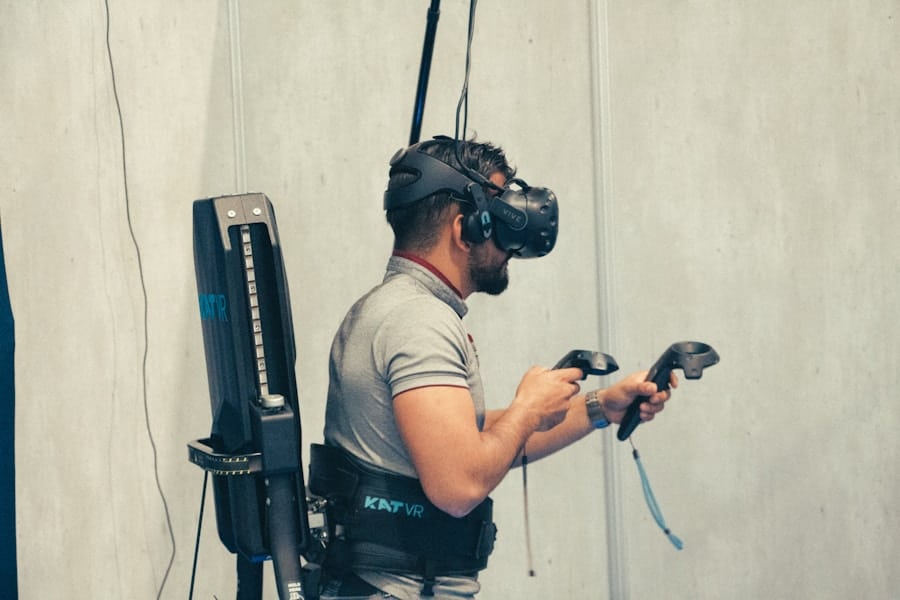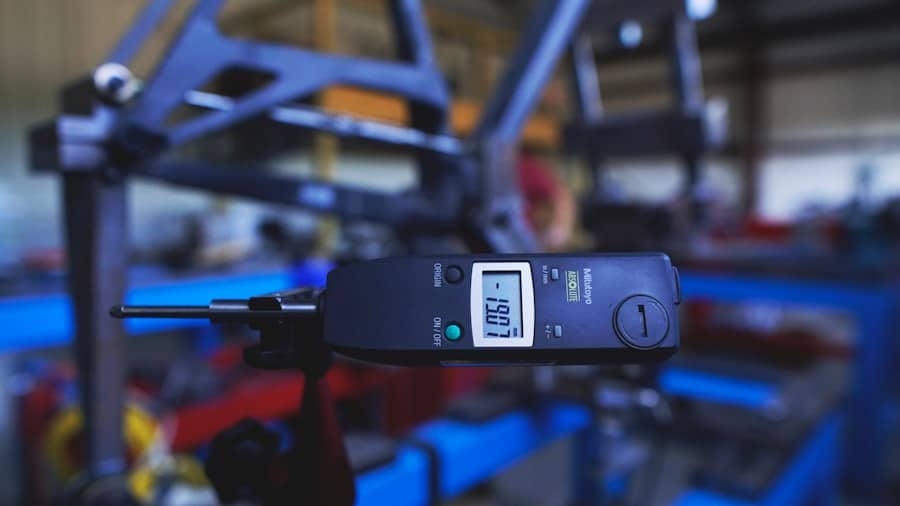Augmented Reality (AR) has emerged as a transformative technology, particularly in high-risk industries such as construction, manufacturing, oil and gas, and healthcare. By overlaying digital information onto the physical world, AR enhances the way workers interact with their environment, providing real-time data and guidance that can significantly improve safety and efficiency. In high-risk settings, where the stakes are often life and death, the ability to visualize complex information and receive immediate feedback can be a game-changer.
The integration of AR into training programs is not merely an enhancement; it represents a paradigm shift in how employees are prepared to handle the challenges of their roles. The adoption of AR in high-risk industries is driven by the need for improved training methodologies that can keep pace with rapidly evolving technologies and processes.
AR provides a solution by immersing trainees in realistic scenarios where they can practice skills in a safe yet engaging manner. This technology not only facilitates better retention of information but also allows for immediate application of learned skills in real-world situations, thereby bridging the gap between theory and practice.
Key Takeaways
- AR in high-risk industries provides a safer and more effective way to train employees for dangerous tasks.
- Using AR for on-the-job training in high-risk industries can lead to improved retention, engagement, and performance.
- Case studies show how AR has been successfully implemented in high-risk industries such as construction, oil and gas, and manufacturing.
- Overcoming challenges of implementing AR in high-risk industries requires addressing issues such as cost, technical limitations, and resistance to change.
- The future of AR in on-the-job training for high-risk industries looks promising, with advancements in technology and increased adoption.
The Benefits of Using AR for On-the-Job Training
One of the most significant advantages of using AR for on-the-job training is its ability to provide immersive learning experiences. Trainees can engage with 3D models and simulations that replicate real-world scenarios, allowing them to visualize complex tasks and understand the implications of their actions. For instance, in the construction industry, AR can project a digital blueprint onto a physical site, enabling workers to see how various components fit together before they begin actual construction.
This not only enhances comprehension but also reduces the likelihood of costly mistakes that can arise from misinterpretation of plans. Moreover, AR facilitates personalized learning experiences tailored to individual needs. Trainees can progress at their own pace, revisiting challenging concepts as necessary without the pressure of keeping up with a group.
This adaptability is particularly beneficial in high-risk environments where workers may have varying levels of experience and expertise. By allowing employees to engage with training materials that resonate with their specific learning styles, organizations can foster a more competent workforce that is better equipped to handle the demands of their roles.
Case Studies of AR in Action in High-Risk Industries

Several high-risk industries have successfully implemented AR technologies to enhance training and operational efficiency. In the oil and gas sector, companies like BP have utilized AR to train workers on complex machinery and safety protocols. By using AR headsets, trainees can visualize equipment components and receive step-by-step instructions on maintenance procedures.
This hands-on approach not only accelerates the learning process but also ensures that workers are well-versed in safety measures before they step onto the rig. In healthcare, AR has been employed to train medical professionals in surgical procedures. For example, the use of Microsoft HoloLens has allowed surgeons to overlay critical patient data onto their field of view during operations.
This technology enables them to visualize anatomy in 3D, enhancing their understanding of complex structures and improving surgical precision. The ability to practice procedures in a simulated environment before performing them on actual patients significantly reduces risks associated with surgical errors.
Overcoming Challenges of Implementing AR in High-Risk Industries
Despite its numerous benefits, the implementation of AR in high-risk industries is not without challenges. One major hurdle is the initial cost associated with developing and deploying AR systems. High-quality AR solutions often require significant investment in hardware, software, and content creation.
Organizations must weigh these costs against potential long-term benefits, which can be difficult to quantify upfront. Additionally, there may be resistance from employees who are accustomed to traditional training methods and may be skeptical about adopting new technologies. Another challenge lies in ensuring that AR content remains relevant and up-to-date.
In fast-paced industries where regulations and technologies evolve rapidly, training materials must be continuously revised to reflect current practices. This necessitates ongoing collaboration between subject matter experts and AR developers to create accurate and effective training modules. Furthermore, organizations must invest in training their workforce not only on the technical aspects of using AR but also on how to integrate it into their daily operations effectively.
The Future of AR in On-the-Job Training for High-Risk Industries
The future of AR in on-the-job training for high-risk industries appears promising as advancements in technology continue to unfold. As hardware becomes more affordable and software solutions become more sophisticated, we can expect wider adoption across various sectors. The integration of artificial intelligence (AI) with AR could further enhance training experiences by providing real-time feedback and adaptive learning paths based on individual performance metrics.
Moreover, as remote work becomes more prevalent, AR has the potential to facilitate virtual collaboration among teams spread across different locations. For instance, technicians working on a malfunctioning piece of equipment could receive remote assistance from experts who can see what they see through AR glasses. This capability not only enhances problem-solving efficiency but also reduces downtime associated with equipment failures, ultimately leading to increased productivity.
Best Practices for Implementing AR in High-Risk Industries

Conduct a Thorough Needs Assessment
First and foremost, it is essential to conduct a thorough needs assessment to identify specific training gaps that AR can address. Engaging with employees during this process ensures that the developed content is relevant and meets their needs.
Design User-Centric Training Programs
Additionally, organizations should prioritize user-friendly interfaces that minimize the learning curve associated with new technologies. Training programs should incorporate hands-on practice sessions where employees can familiarize themselves with AR tools before applying them in real-world scenarios. Continuous feedback loops are also crucial; organizations should solicit input from trainees to refine content and improve user experience continually.
Foster a Culture of Innovation
Furthermore, fostering a culture of innovation within the organization can encourage employees to embrace new technologies like AR. Leadership should actively promote the benefits of AR training and provide opportunities for employees to share their experiences and insights. By creating an environment where experimentation is encouraged, organizations can drive greater acceptance and utilization of AR solutions.
The Role of AR in Improving Safety and Efficiency in High-Risk Industries
AR plays a pivotal role in enhancing both safety and efficiency within high-risk industries by providing workers with critical information at their fingertips. In environments where split-second decisions can have dire consequences, having access to real-time data can significantly mitigate risks. For example, maintenance personnel equipped with AR devices can receive instant alerts about equipment malfunctions or safety hazards while performing their tasks, allowing them to take immediate corrective action.
Moreover, by streamlining workflows through augmented instructions and visual aids, AR reduces the cognitive load on workers. This simplification allows employees to focus on executing tasks rather than deciphering complex manuals or instructions. In manufacturing settings, for instance, assembly line workers can benefit from step-by-step visual guides projected onto their workstations, leading to faster production times and fewer errors.
The Impact of AR on On-the-Job Training in High-Risk Industries
The integration of Augmented Reality into on-the-job training programs within high-risk industries marks a significant advancement in workforce development strategies. By providing immersive learning experiences that enhance understanding and retention, AR equips employees with the skills necessary to navigate complex environments safely and efficiently. As organizations continue to explore innovative applications of this technology, it is clear that AR will play an increasingly vital role in shaping the future of training in high-risk sectors.
The ongoing evolution of AR technology promises even greater enhancements in training methodologies, paving the way for safer workplaces and more competent employees. As industries adapt to these changes, the potential for improved safety outcomes and operational efficiencies will only grow stronger, underscoring the importance of embracing this transformative technology in high-risk environments.
A related article to “How AR Is Powering On-the-Job Training in High-Risk Industries” is “RankAtom Review: The Game-Changing Keyword Research Tool.” This article discusses a tool that can help businesses improve their online presence and reach their target audience more effectively. By utilizing tools like RankAtom, companies in high-risk industries can enhance their training programs and ensure that employees are well-prepared for any potential hazards they may encounter on the job. To learn more about this innovative keyword research tool, check out the article here.
FAQs
What is AR?
AR stands for Augmented Reality, which is a technology that superimposes digital information such as images, videos, or 3D models onto the real world.
How is AR being used in on-the-job training?
AR is being used in on-the-job training to provide interactive and immersive experiences for employees in high-risk industries. It allows trainees to practice tasks in a simulated environment, receive real-time feedback, and access information and guidance hands-free.
What are some high-risk industries that are using AR for training?
High-risk industries such as construction, manufacturing, oil and gas, aviation, and healthcare are using AR for training purposes. These industries often involve complex and hazardous tasks that require thorough training and safety protocols.
What are the benefits of using AR for on-the-job training in high-risk industries?
Some benefits of using AR for on-the-job training in high-risk industries include improved safety, reduced training time, cost savings, increased retention of information, and the ability to train employees in realistic and high-stress scenarios.
Are there any challenges associated with implementing AR for on-the-job training?
Challenges associated with implementing AR for on-the-job training include the initial cost of the technology, the need for specialized content creation, potential technical issues, and the requirement for employees to adapt to using AR devices and interfaces.

